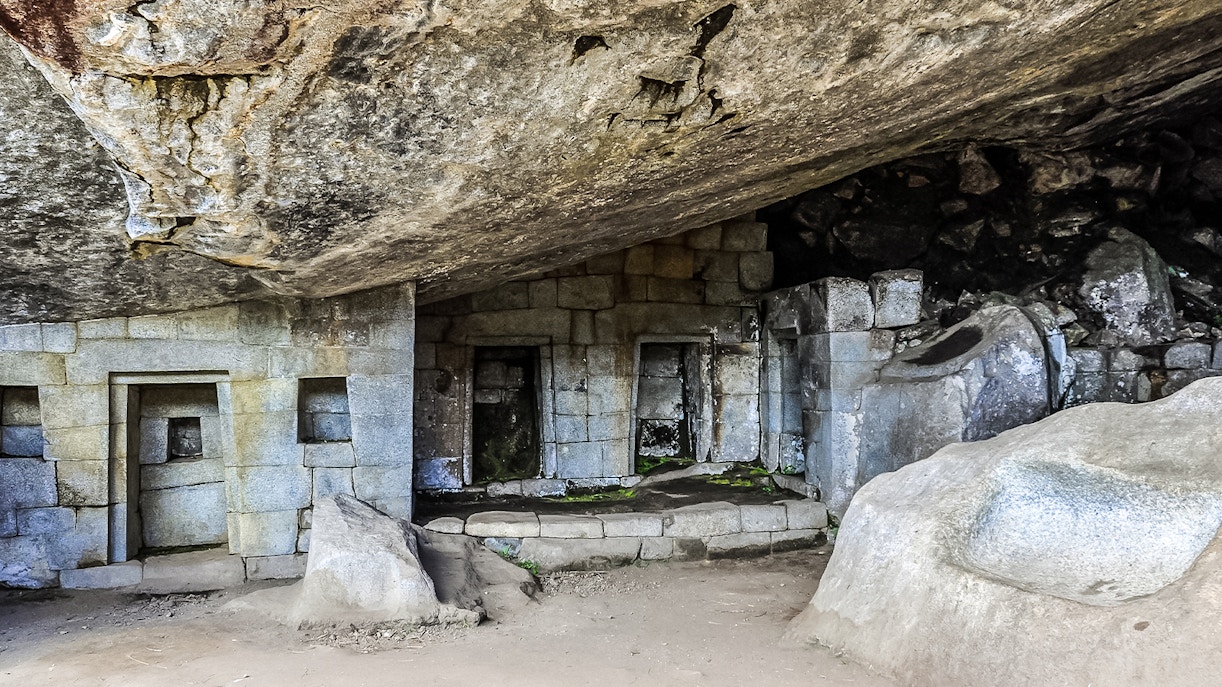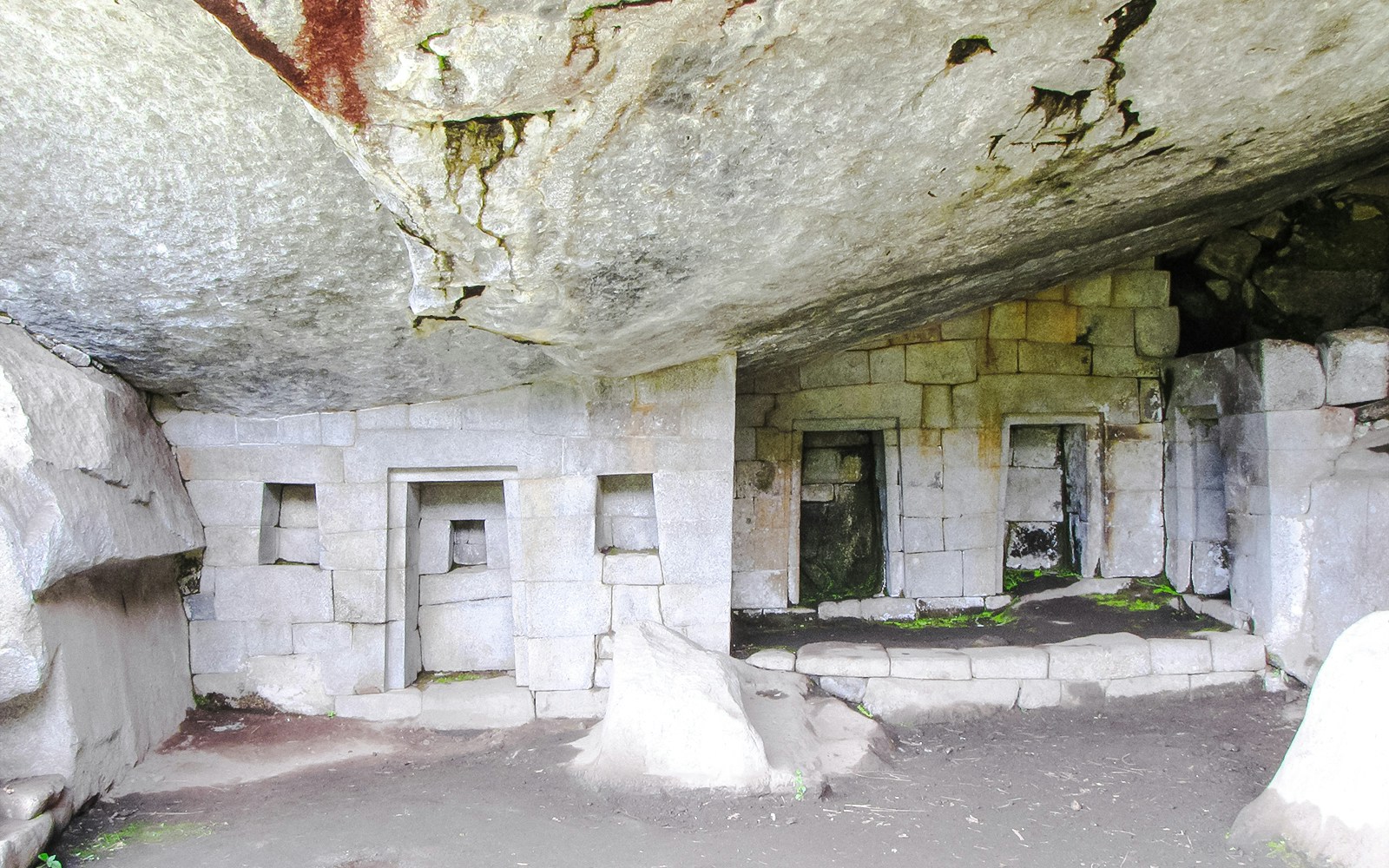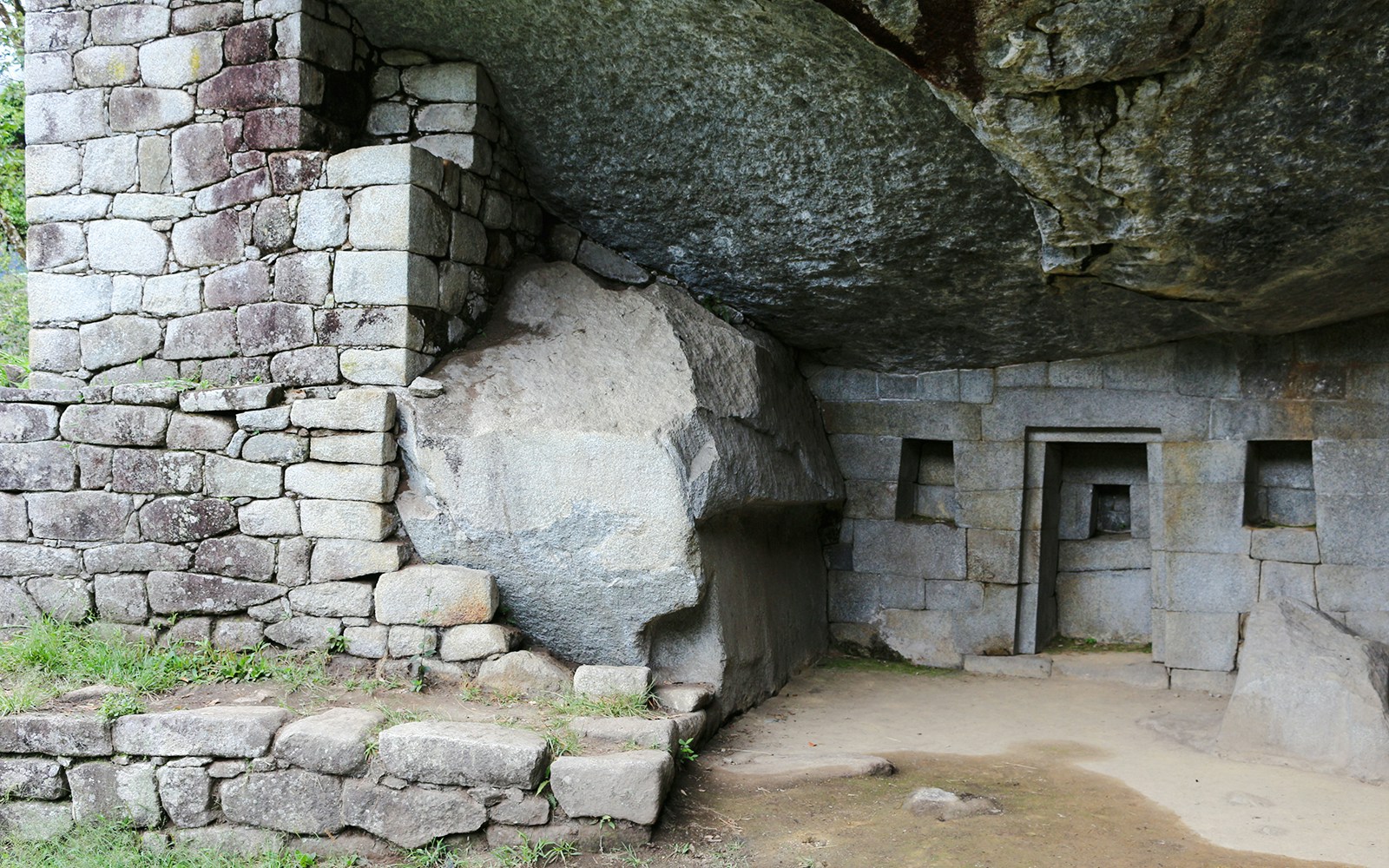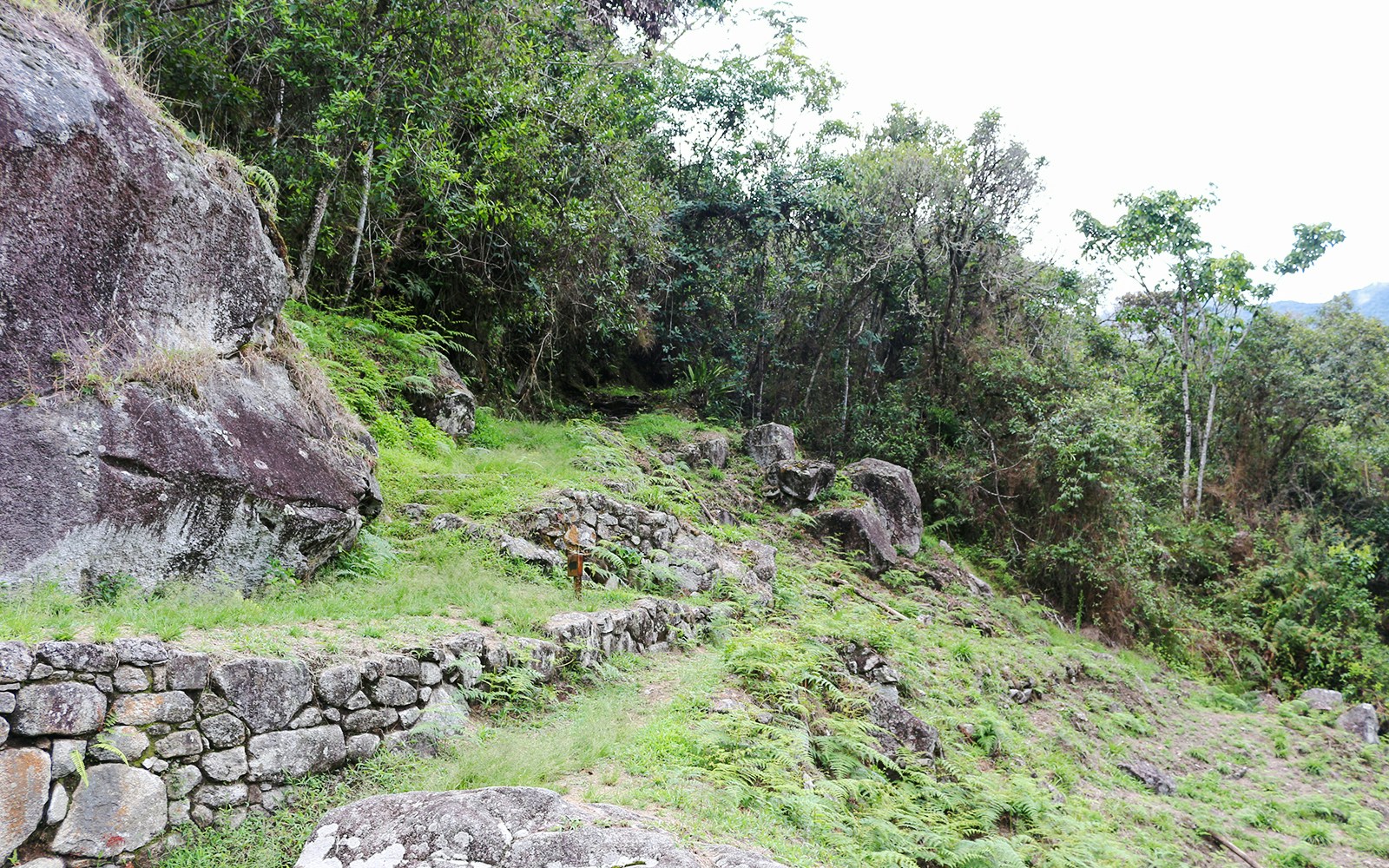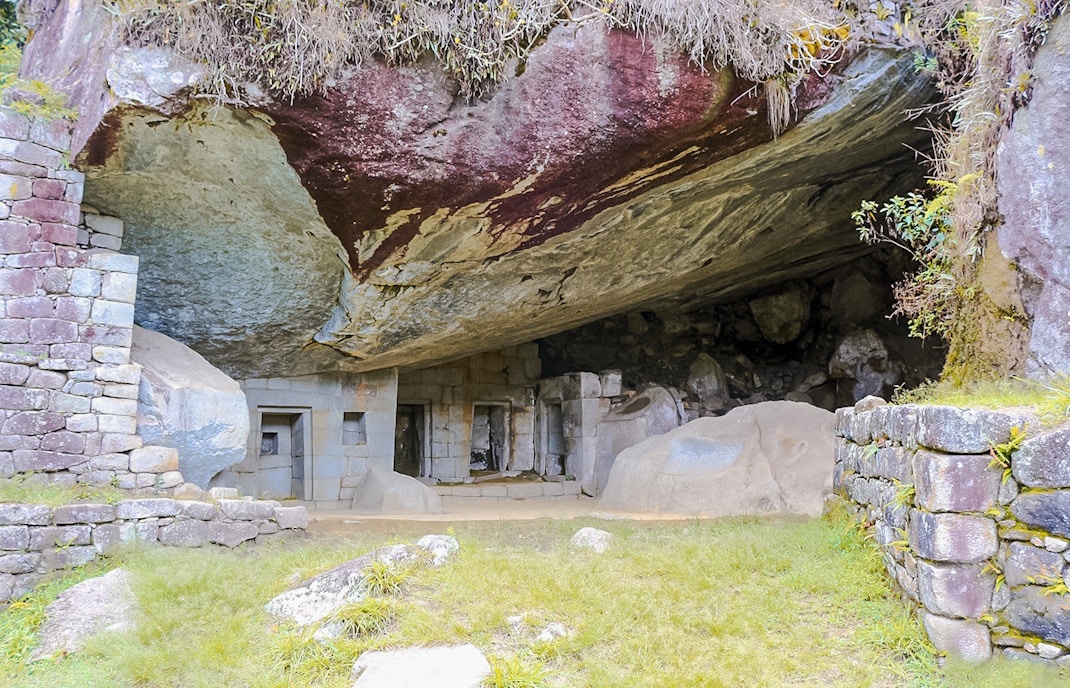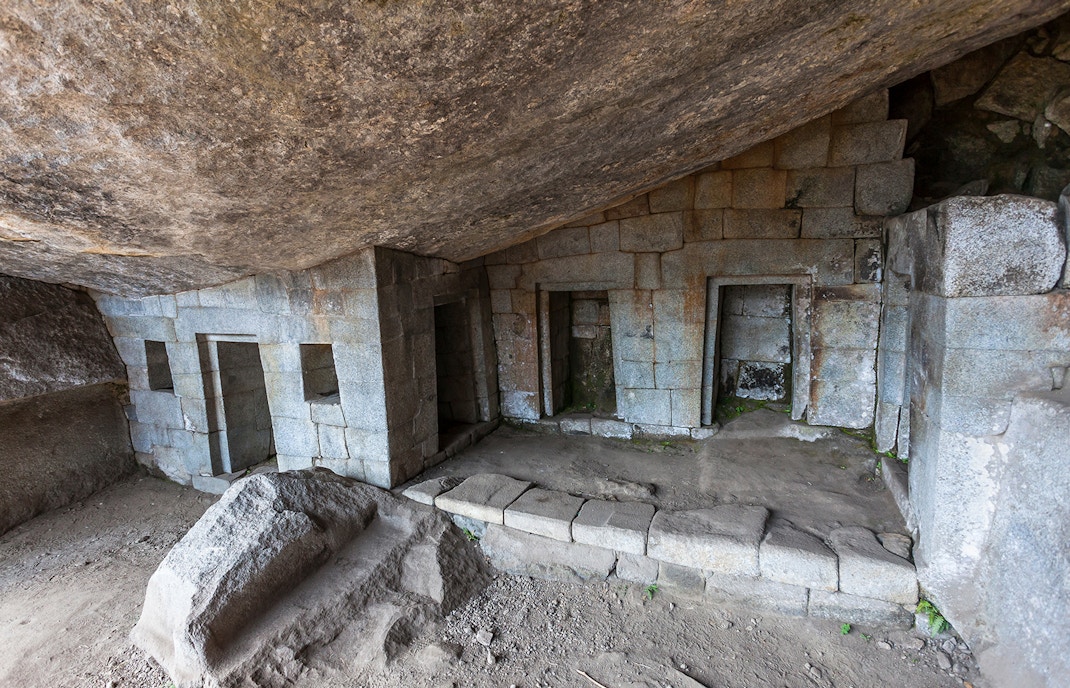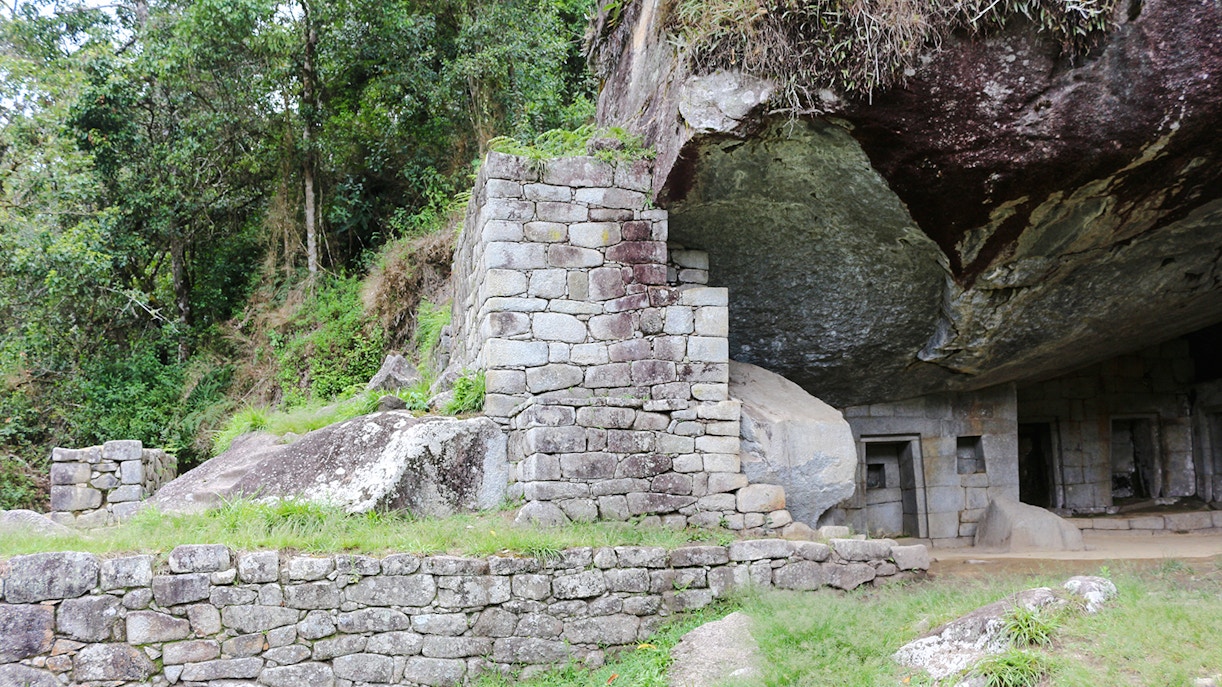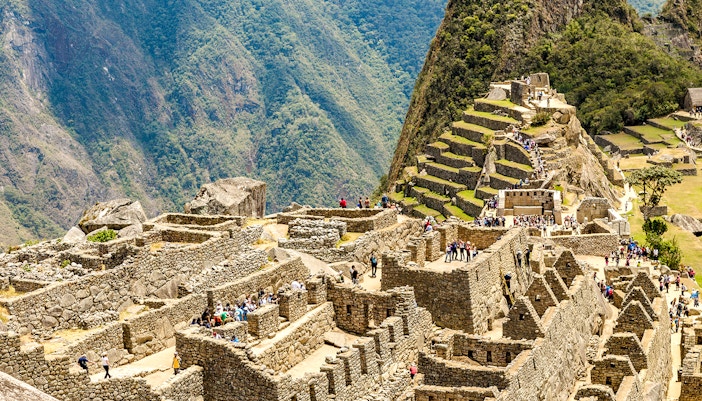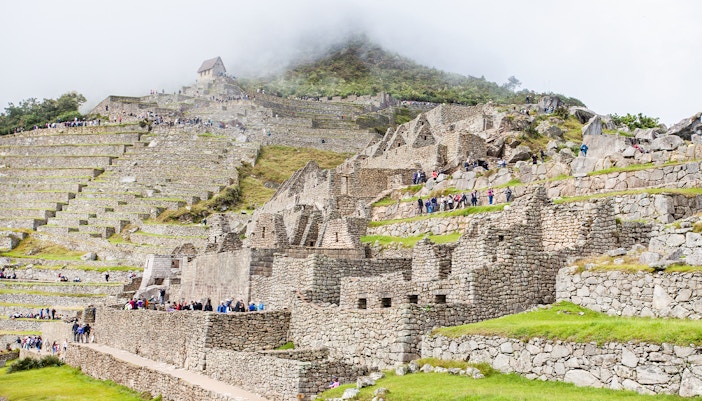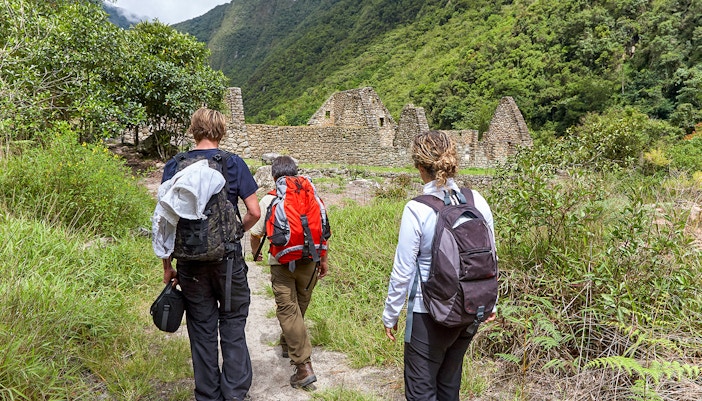The Temple of the Moon sits on the side of Huayna Picchu, the towering peak often seen in iconic Machu Picchu photos. It’s about an hour’s hike from the summit, tucked into a sheltered cave that feels worlds away from the busy citadel.
Circuit 3C: Entry to the Temple of the Moon isn’t included with every Machu Picchu ticket. You’ll need a specific Circuit 3 Route C ticket to explore it. These tickets are limited daily, so book your spot in advance, especially if you’re traveling in peak season.

